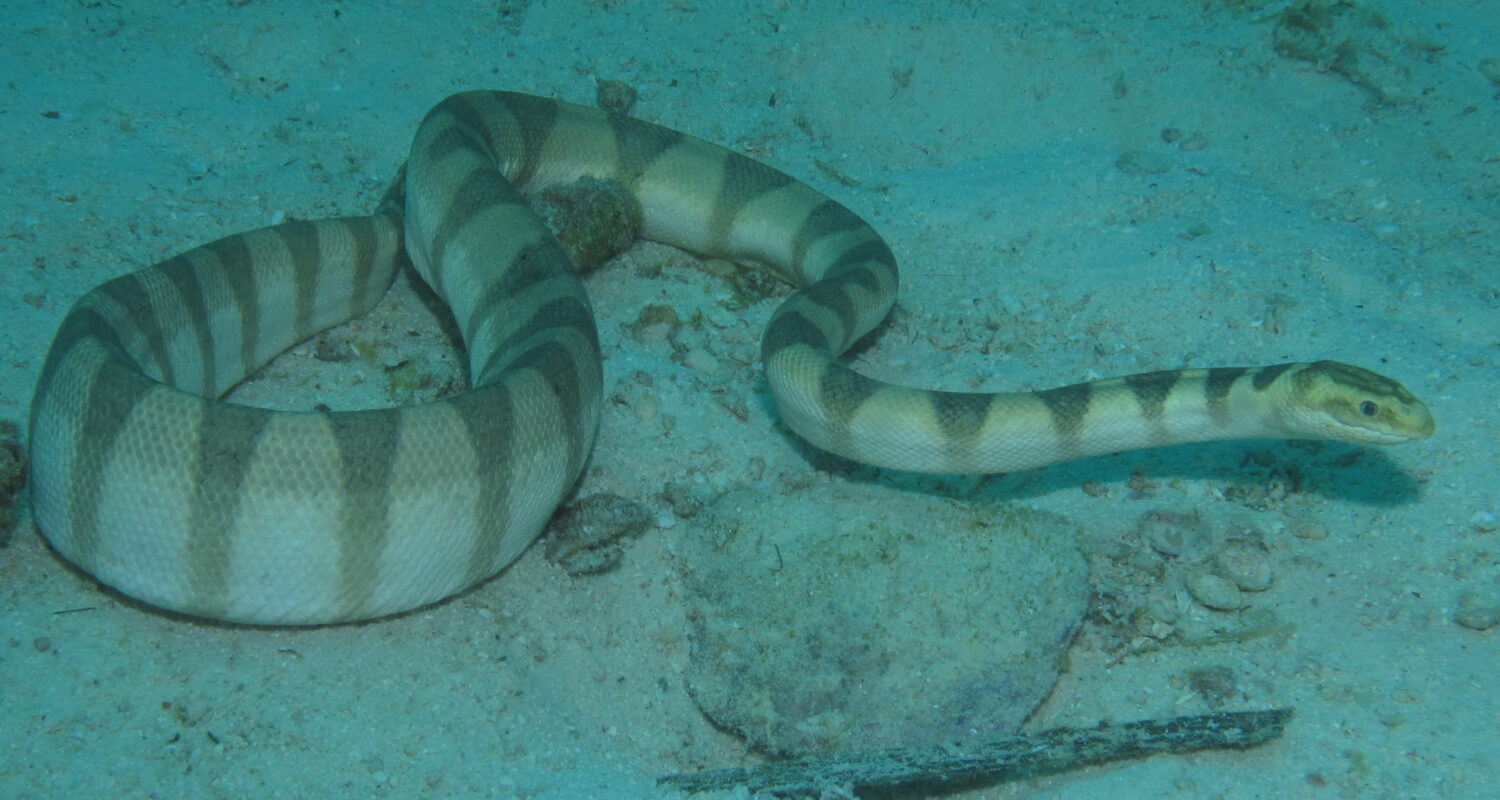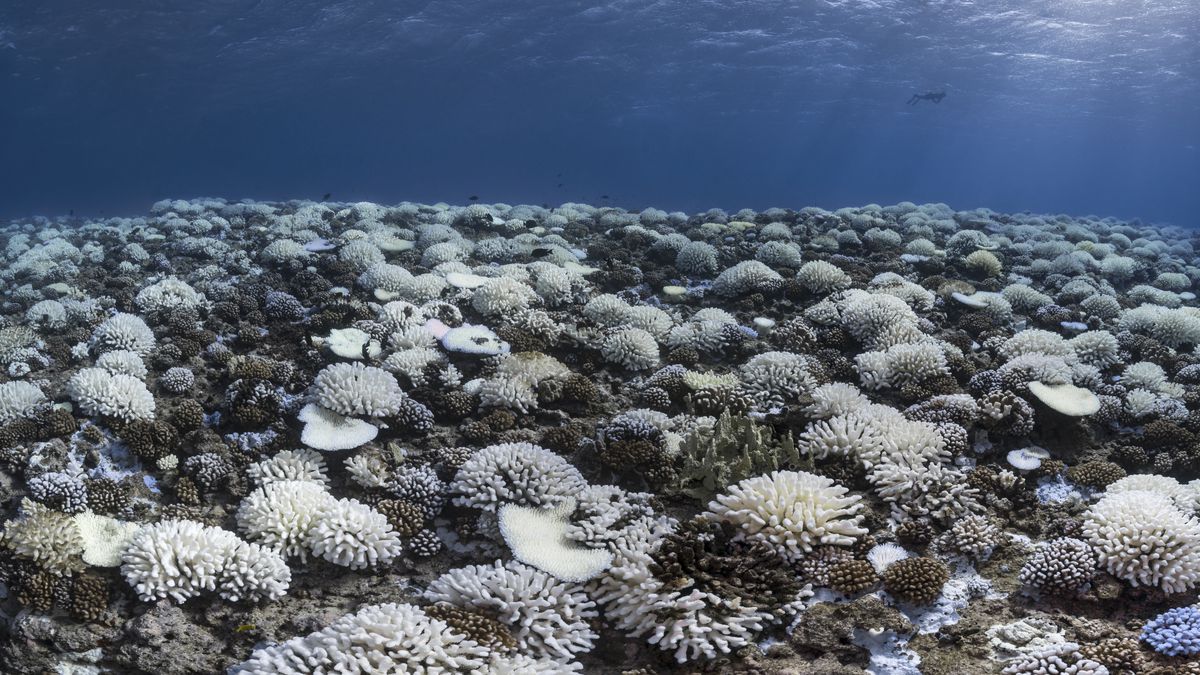Study: Rao, Chetan, et al. “Fisheries induced shift in sea snake community assemblages along the Konkan coast, India.” Aquatic Conservation: Marine and Freshwater Ecosystems (2021). Doi: https://doi.org/10.1002/aqc.3658
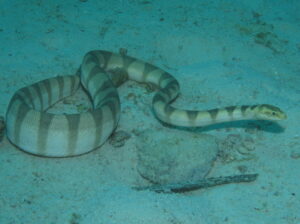
A Slithering Snag
With climate change, loss of habitat, and overfishing becoming increasingly dire problems for ocean ecosystems, there has been a lot of talk about ocean conservation. But too often, the topic of ocean conservation conversations concerns popular sea creatures that people everywhere love, like sea turtles, whales, and manatees. Left out of the conversation are animals that are not quite so cute.
Sea snakes are among these often forgotten animals. Venomous just like land snakes, these aquatic reptiles spend most of their lives in the water, coming up to the surface occasionally to breathe. There are over 60 known species of sea snake, and they primarily live in coastal habitats in the Indian and Pacific Oceans.
In the Indian Ocean in particular, sea snakes often fall victim to the fishing industry – fishermen will catch the snakes while putting out nets meant to catch fishes, and the snakes are either tangled up or trapped in the nets, leading to casualties caused by crushing, drowning, or strangling. Ocean animals that are accidentally caught in fishermen’s nets like this are called bycatch.
In the early 2000s, researchers examined the Indian Ocean’s fishing industry and its effects on the sea snakes that live there, and found that about 50% of the sea snakes who were accidentally caught by fishermen died. In addition, over the years fishermen have noted fewer sea snakes in their hauls, which may mean that there are fewer snakes in the ocean. This prompted researchers in India to investigate the current relationship between sea snakes and fishermen.
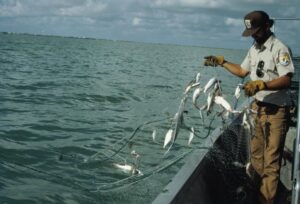
Snake Sleuthing
The researchers studied fishing vessels that used two different types of nets in their work: gillnets and trawlers. Gillnets are a wall of mesh netting that is suspended, or floating, in the water. Fish become stuck in the mesh as they try to swim through it. Trawlers are nets that are either dragged on the seafloor or in the water column as a boat moves. As the net moves through the water, sea creatures become trapped in it and unable to escape.
The scientists examined the catch of each vessel over a period of three years, and looked for two species of sea snake very common to the Indian coast: the beaked sea snake and the spine-bellied sea snake. They also noted if the snakes were still alive when they were brought onto the boats, in order to figure out how many sea snakes who become bycatch actually die.
Bycatch Blues
Trawling nets killed many more sea snakes than the gillnets. Around 65% of spine-bellied sea snakes and 30% of beaked sea snakes that were caught in the trawlers died, compared to only about 25% and 5% mortality rates in gillnets.
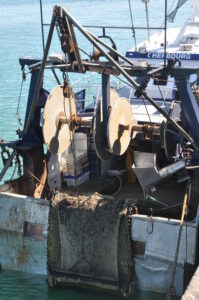
While the total number of sea snakes caught remained relatively constant in all three years examined, the researchers noticed a troubling trend. Earlier studies had found many more spine-bellied sea snakes than beaked sea snakes in fishermen’s nets, but in this study, the opposite was true. The abundance of spine-bellied sea snakes decreased by over 60% compared to its abundance in a 2002 study, while the abundance of the beaked sea snake increased by the same amount compared to previous numbers. This likely means that fishing is changing the sea snake community in the Indian Ocean. But how is this possible? Researchers think the answer lies in how these sea snakes reproduce.
Beaked sea snakes lay many eggs and reach sexual maturity at 18 months, so they produce a lot of young each year. Spine-bellied sea snakes do not lay very many eggs and grow slowly, reaching sexual maturity after several years of life. Because of this, spine-bellied sea snake populations cannot bounce back very quickly when they are decimated due to bycatch, while beaked sea snakes are still able to hatch many young even while being fished. Over time, the dominant species of sea snake in the Indian Ocean changed. While this may not seem like incredibly bad news, changes like these can alter entire ecosystems, as the different snake species may prefer eating different things or living in slightly different habitats.
Crafting Conservation
This study is a prime example of the dangers that certain fishing practices can have on ocean species – and possibly entire ecosystems. It is clear, at least where sea snakes are concerned, that trawlers are much more detrimental than gillnets, so limiting the number of trawlers allowed to operate in the Indian Ocean and putting other restrictions on their use could greatly help sea snake species. Better fishing practices that reduce bycatch in general could also be incredibly useful, such as changing netting material or hole sizes, in order to prevent sea snakes from getting entangled in the first place.
Since the sea snake community in the Indian Ocean has been greatly altered by fishing, it is unclear if it will ever go back to its original state, especially while bycatch and other fishing problems remain unsolved. There are relatively few conservation efforts in place for sea snakes, possibly because they are understudied and don’t get much public attention. Spreading awareness helps, so perhaps next time the topic of ocean conservation comes up for you, consider talking about sea snakes along with turtles and polar bears. They need our help too.
I received my PhD in Biology from Wake Forest University, and I received a BS in Biology from Cornell University. My research focuses on the terrestrial locomotion of fishes. I am particularly interested in how different fishes move differently on land, and how one fish may move differently in different environments. While I tend to study small amphibious fishes, I’ve had a lifelong fascination with all ocean animals, and sharks in particular. When not doing science, I enjoy running, attempting to bake and cook, and reading.

